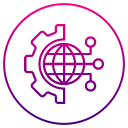
Smart Transportation Systems and Digitalization: Moving Cities with Intelligence
Chosen theme: Smart Transportation Systems and Digitalization. Explore how data, software, and human-centered design reshape mobility, cut congestion, and make travel safer, faster, and cleaner. Share your insights and subscribe to join our growing mobility community.
Why Smart Transportation Systems Matter Now
Smart sensors, connected signals, and dynamic routing translate traffic chaos into actionable intelligence. Instead of guessing, cities predict demand, balance flows, and prioritize safety. Tell us where bottlenecks hit hardest during your daily commute.
Digitalization Building Blocks
Sensing the City in Real Time
Cameras with privacy filters, LIDAR at intersections, and inductive loops quantify movement without exposing identities. Accurate detection feeds adaptive signals and safety analytics. What sensor mix would best fit your neighborhood’s unique geometry?
5G, Edge, and Low-Latency Decisions
Split-second choices—like emergency vehicle preemption—demand edge computing and robust connectivity. 5G, Wi‑Fi 6, and fiber backbones minimize lag and boost reliability. Which corridors in your city need low-latency upgrades first, and why?
APIs, Open Standards, and Scalable Platforms
Standards such as GTFS, GBFS, and OCPI enable interoperability across transit, micromobility, and charging. Well-documented APIs prevent vendor lock‑in and encourage innovation. Share which standards your projects already use—or plan to adopt.
Stories from the Street: Wins and Lessons
Singapore’s Predictive Corridor Management
By fusing probe data and adaptive signals, Singapore reduced corridor delays during peak periods and improved bus punctuality. The lesson: prioritize clear KPIs and continuous calibration. Which corridor in your city begs for predictive control?
Stockholm’s Digital Congestion Pricing
A smart tolling scheme cut inner‑city traffic and boosted transit use without halting economic activity. Transparent communication won public trust. Could targeted, reinvested fees fund safer crossings and better service where you live?
Los Angeles Mobility Data Collaboration
Shared micromobility feeds and privacy safeguards enabled better curb allocation and reduced sidewalk clutter. Cross‑agency governance proved essential. What governance model would help your teams coordinate streets, transit, and freight more effectively?

Sustainability and Resilience in Motion
Smart scheduling, depot optimization, and vehicle‑to‑grid strategies reduce costs and stabilize energy demand. Transparent uptime metrics keep fleets rolling. Which routes in your network are ripest for electric buses or vans next year?
Pick measurable goals—travel time, crash reduction, emissions—and capture today’s baseline. Without it, success is guesswork. What one metric would persuade your stakeholders that digitalization is paying off within six months?

The Road Ahead: Autonomous, Connected, and Shared
Vehicles that talk to signals and pedestrians’ phones can prevent collisions and smooth flow. Standardized messages make cities safer. Where would you deploy the first smart intersection to build public trust quickly?
